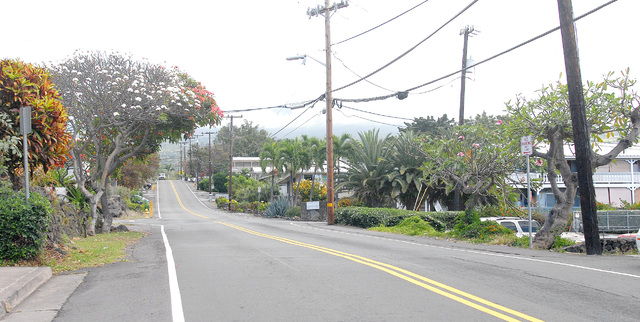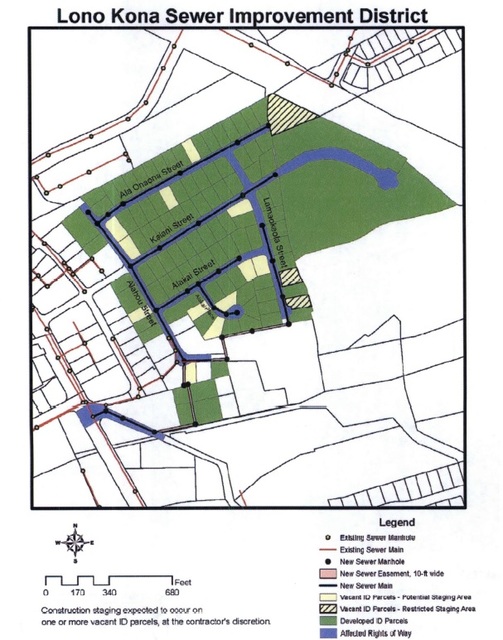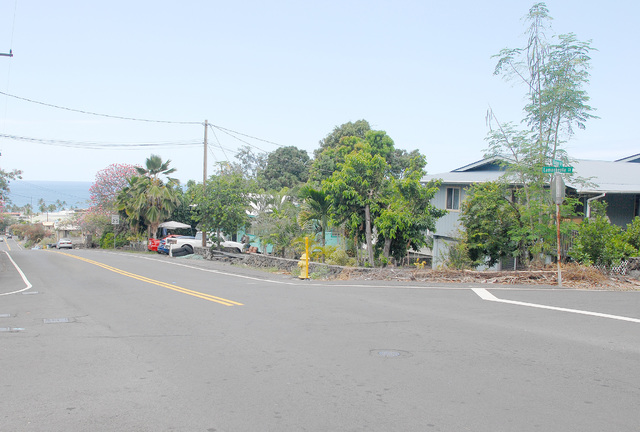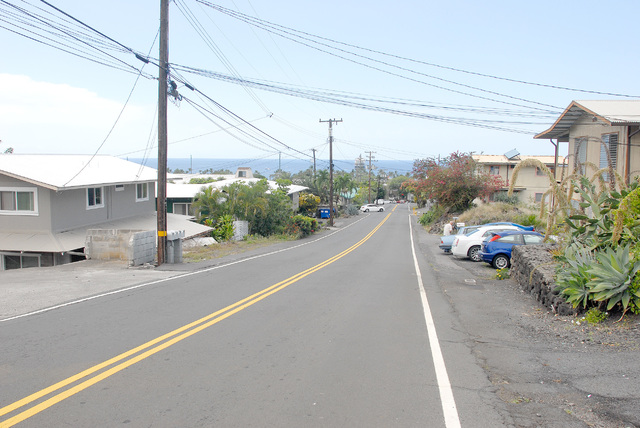New legislation working its way through the capitol could blunt the pain of converting from cesspools and septic tanks to a planned sewer line in the Lono Kona subdivision.
The system of sewer lines will be installed within the county right of way, except for two segments which would need an easement across private property under one possible development scenario, according to a new environmental assessment that found no significant impacts. Property owners will be responsible for closing their existing cesspools and doing the work on their property needed to connect to the sewer lines.
The cost of the in-street infrastructure alone is pegged at just over $9,000 per single family unit. Residents will also be out-of-pocket for all of the work that needs to be done on their property. In a subdivision regarded as one of the more affordable housing areas in Kailua-Kona, this cost could be knocked down significantly by a new bill that would offer tax credits for such conversions.
House Bill 1140, which advanced out of its final committee last week, would provide a $10,000 income tax credit to some homeowners converting from cesspools. The bill gives priority to cesspools located near shorelines, streams and public drinking wells. However, it remains up to the director of the state Department of Health to decide exactly how priority will be determined, if the bill is passed. And Lono Kona residents, located within a DOH critical wastewater disposal area, should be able to take advantage of the credit, said state Rep. Nicole Lowen, D-Kona, who authored the bill.
“Priority would be given to areas with highest risk of harm to human health or the environment, and I think Lono Kona would qualify,” Lowen said. “We will still be working on the language of the bill as it heads to conference committee, so I’ll plan to clarify that point if there is any question about it.”
Resident Curtis Tyler said many of his neighbors recognize the need for the work but worry about costs. Some are on fixed incomes and others own only one piece of property.
“That credit of $10,000 is going to be really important,” Tyler said.
Several Lono Kona properties had received violation notices from the U.S. Environmental Protection Agency for being hooked up to large capacity, or “gang” cesspools, prompting some residents to ask for the formation of a sewer improvement district.
The project will require 6,000 feet of 10-inch and 8-inch sewer pipe, 35 sewer manholes, lateral lines to 110 lots and roadway repavement work in a 43-acre area. The project will link into the North Kona Sewer System, with waste going to the Kealakehe Wastewater Treatment Plant.
The $6.4 million project is expected to go out for bid around this time next year, with construction to begin in fall of 2016 and wrap up in spring 2018.
The network of pipes would run along Alahou Street and mauka up Alakai Street and Alakai Place, Kalani and Ala Onaona streets and along Lamaokeola Street. The system would connect down Kalani Street to an existing main along Kuakini Highway, or cut across private property at the south end of Alahou Street to run down Hualalai Road to Kuakini Highway.
A U.S. Department of Agriculture grant will cover $4 million of the cost, with the balance in a loan that the property owners will pay off through the assessments. The annual bill to property owners for each single family unit works out to $541, according to the EA prepared by PBR Hawaii &Associates Inc.
The project is designed to prevent contaminated groundwater from seeping into Kailua Bay, located about a third of a mile away.
Letters of protest received by the county totaled only 21, far below the 50 percent threshold of 124 protests needed to stop the creation of the district.
The lot sizes in the subdivision, created in 1962, are generally too small for septic tanks and leach fields. The area is a mix of single family homes, duplexes, apartments, vacant land and commercial uses.














